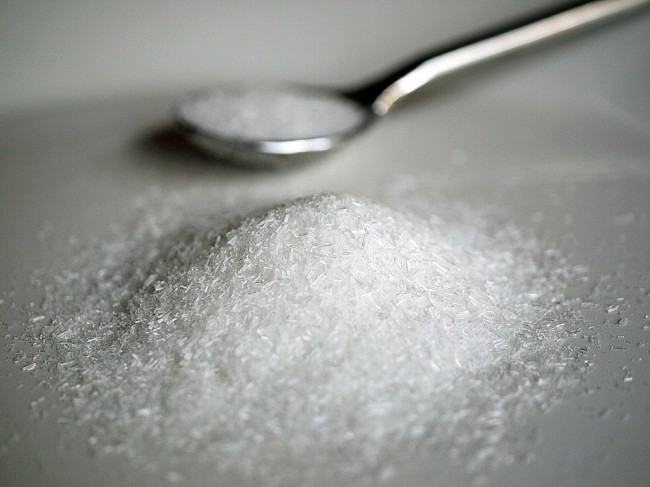
While I usually write about nature subjects, this week I had something come up that took my attention away from the natural in favor of the chemical. And the type of chemical is not friendly to me.
This month and next are high travel times for me. That means that I have to be careful not to be poisoned by the food I eat. You see, I react adversely to monosodium glutamate, the dreaded MSG often associated with Chinese food.
 For over 30 years, I have known about this reaction, and have adjusted my life to avoid it as much as possible. But whenever I eat in restaurants, or as a guest in most private homes, I am extremely vulnerable. Just like the trip I had this week.
For over 30 years, I have known about this reaction, and have adjusted my life to avoid it as much as possible. But whenever I eat in restaurants, or as a guest in most private homes, I am extremely vulnerable. Just like the trip I had this week.
Over two days in California, I got poisoned twice, both times at lunch, both times at restaurants, both times after being assured there was no MSG in the food. This statement–no MSG–has become of the three great lies. Experience has taught me to doubt everyone, from wait staff to the food preparers.
In today’s American restaurants, MSG has become so prevalent that it is in practically every kind of food. It’s no longer isolated to Chinese cuisine.
American food labeling laws have helped only slightly. Products containing MSG are required by federal law to list it on the packaging. Sounds great, but it doesn’t work. Food processors have found a trillion (today’s favorite number) ways to get around the listing requirement.
Let me explain what monosodium glutamate is and what its effects are on the human body, especially this human body.
Monosodium glutamate (MSG) is an excitotoxin that is used as a flavor enhancer for food. It contains glutamic acid, which occurs naturally in humans. However, there have been so many changes to the make-up of MSG that it has morphed dramatically into a product that bears little relationship to any of its former natural elements. In layman’s terms, MSG makes your taste buds think the food passing by them tastes better than it really does. MSG is often used in broths, soups, chips, seasonings, salad dressings, and a plethora of way too many items to name here. This site has some of the most helpful information about MSG that I have found.
Reactions to MSG may be as slight as dry mouth and tiredness to as serious as anaphylactic shock, potentially causing death. When employees in my former companies had foods known for their MSG content, such as Chinese and cold meat sandwiches, delivered for eat-in lunches, I could see the differences in their behavior within one to two hours: increased water consumption, slowness of speech, tiredness, frequent quiet times staring at the computer, and other indicators with which I had become familiar.
My personal reaction, while not as severe as for those who go into anaphylactic shock, is serious enough to cause me to lose a day of my life if I do not take medication. MSG, even in the slightest amount, triggers my nervous system. My muscles in my neck, where I have the residual damage from three fractures, contract and pinch nerves and the pain begins.
As if that weren’t enough, a rapidly advancing pain wraps around to the left front of my forehead and eye. My stomach becomes very upset. All I want is a dark room, quiet and relief. I used to eat Excedrin by the handfuls – not exactly a healthy diet for the kidneys and liver. I “graduated” to Tylenol 3 with codeine, and hated the drowsiness and vagueness. Fortunately, I never operated any farm equipment while in this state. Then, thankfully, a very smart doctor prescribed Imitrex, or its generic Sumatriptan, which doesn’t mask the pain; it magically interrupts its signaling pathways.
So, now that I know to read labels and ask restaurant staff the critical question, how did I get sick in California at two lunches? Easy: people lied or they didn’t know the truth.
One “poisoner” was a neighborhood Mexican restaurant in Santa Barbara where the fish tacos just seemed too tasty. In fact, I became suspicious and didn’t eat the second taco, preferring to cut my losses and leave. Sure enough, 18 hours later, the time it now takes for me to react to MSG, I awoke to the all too-familiar pains. Sumatriptan and four ibuprofens allowed me to pursue my busy day at 90 percent effectiveness.
The other “poisoner” was a southern California chain specializing in “fresh” seafood wraps and salads. My salad with grilled salmon promised to contain no MSG, tasted great, and produced sickening results the very morning I had a 6:30 departure from Los Angeles International. Sumatriptan and ibuprofen got me to the rental car agency, on the bus to the airport, and to the coffee and croissant line near the Delta gate.
Next week I’m off for Savannah, Ga., followed the week after by Monterey, Calif. What lies in store food-wise is anyone’s guess. All I know is that I will keep my Sumatriptan prescription filled and enough pills to cover every day.
If I seem resigned to being poisoned, I’m not. I wish food purveyors would just decide to keep MSG out of their food. After all, if the food is fresh, and it is prepared with natural ingredients, and not artificial anything, there’s no need for chemistry. None. Nada.
Fortunately, I have found some delightful restaurants across the country where I can eat safely. I keep a list of them with me when I travel. It’s not a big list, but it is an important one. Locally, there are several restaurants where I am happy to eat: Turtle Shack, Flagler Fish Company , Joseph’s, Columbia, Oasis, Outback, among others. I make a point to eat there whenever events take me away from my wife’s “from scratch” gourmet cooking at home.
If you know of other restaurants that are MSG-free, drop me a note and, as time and the budget allow, I’ll check them out. And if you think you might be reacting to MSG, or some of its sneaky relatives, check out “What Foods to Avoid?”
Until next week, be well (stay away from MSG) and do something special for nature.
![]()
Frank Gromling is the owner of Ocean Publishing in Flagler Beach. Reach him by email here.






























Ben Blakely says
Common now. Many restaurants know only to well that if they use MSG, their customers will vanish.
MSG is almost universally disliked by Americans. Chinese restaurants especially have learned this lesson the hard way.
There are far better causes for you to pursue than to complain about MSG>
Anon1 says
Great article. I too get migraines from MSG. I’d love to know of more restaurant that are (for real) MSG-free. Thanks for posting this, I’ll read up on the links included.
Geezer says
M-S-G.
Those three letters spell thirst, migraine, lethargy, edema, arrhythmia, and tachycardia to me.
Most of you can tell if you’ve been fed this substance as it imparts a subtle, yet almost imperceptible metallic taste on the tongue. I can tell right away when I’ve been “poisoned” with MSG–I feel as if I’m having a heart attack.
Many places serve this up surreptitiously. They almost always deny using it. (MSG)
GoodFella says
Alot of restaurants especially the buffets use MSG especially the buffet here in town. That is why I stay away from them. They purchase cheap quality meats and then lace them with MSG to trick people into thinking that it tastes great.